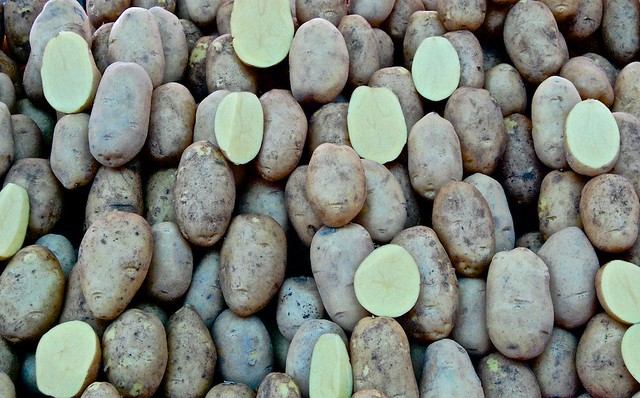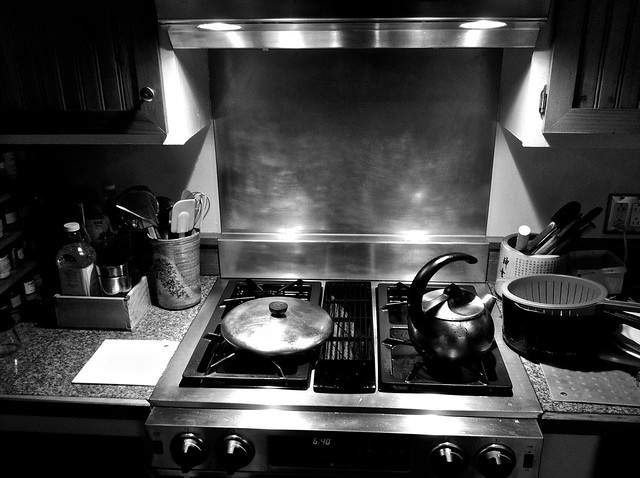Santa Cruz is sure that it’s the coolest place in the hemisphere. The denizens run the gamut from racy to flaky, with all expressing pronounced Green tendencies. The bakeries are simply amazingly wonderful






Santa Cruz is sure that it’s the coolest place in the hemisphere. The denizens run the gamut from racy to flaky, with all expressing pronounced Green tendencies. The bakeries are simply amazingly wonderful






I’ve been carrying an iPhone for more than two years now, though previously I swore never to have anything to do with such appliances. I rarely use it as a phone, and the several camera apps get the most mileage. While flying from Boston to San Francisco yesterday I tried it out as an aerial camera and was amazed at the results. Try these on for size:

Sometimes you meet an Original, a person whose chosen form of art and expression is not in any way derivative, who uses materials (musical [Daniel Heïkalo] or literary [Georges Perec] or graphic [Luigi Seraphini] or sculptural or culinary or…) in a unique or idiosyncratic way. I’ve known a few, and enjoyed the surprise of encounter when new instances appeared.
Ahmet Gezer, sometimes known as ‘Crazy Ahmet’



(Jabba the Hutt? or somebody even stranger)

(hard to say what it IS, just on its way to becoming something)

There’s also an example of neolithic agricultural technology in the yard, two wide boards about 5 feet long, inset with flint blades and I think meant to be used on a threshing floor, pulled around in a circle by animals and weighted down by a squatting farmer (or so I imagine from Ahmet’s demonstration).

I’ve been in thrall to the Bay of Fundy ever since I decided (in about 1970) to do my dissertation research in Nova Scotia. In 1972 we moved into a house at Horton Landing, right on the very shore of an arm of the Bay, where the tides were 35+ feet and the low-tide mud was a distinctive red-brown. The energy of Fundy truly boggles any mind that considers it, and people have been scheming schemes to capture that energy since, well, pretty much forever. The First Nations folks who were the first inhabitants of the landscapes around the Bay told stories about the Beavers who tried to dam Fundy, and the culture hero Glooscap who smashed their dams; and so it is with any later folk who have tried to steal Fundy’s energy: turbines are crumpled, silt is deposited in unpredicted places, and sadder and wiser Beavers retreat to scheme again. Will those tides ever be “harnessed” or will Glooscap return to sort things out?
On the latest trip to Nova Scotia we stopped at the Clarence Gosse Bridge over the Shubenacadie River, a structure with its own tales of Beaver hubris. Built in 1979 and an early example of its type (a pre-stressed concrete box girder bridge, the two sections meeting in the middle, said by some to be “the world’s first cantilever bridge”), by the early 1980s its smooth curve was disrupted by subsidence at the center join –the engineers hadn’t reckoned with the sheer power of the tides and/or the depth of the mud. There’s a thump from every wheel that crosses.
From the observation point on the river bank one sees the power of Fundy in several ways. There’s a tidal bore that attracts rafters and kayakers (though I’ve never seen it there myself), and the old piers of the (now-vanished) railroad bridge are impressively eroded. At low tide you see almost nothing but red mud with a trickle of the Shubenacadie at the very bottom; just before high tide the incoming river is impressively wide. This trip I looked down and saw the swirling of mixed silty and clearer waters, and tried to capture it with the camera:


Market vendors take great pains to make their wares attractive to potential buyers, and I suspect there are styles of display that could be identified, just as there are vocal come-ons that could be recorded. There’s not much that’s haphazard, and a lot of virtuoso arrangement goes into setup (indeed, photographing the process of setup would be a wonderful challenge). The two markets we visited, one daily (Adapazarı) and the other weekly (Sapanca), were a delicious introduction to vast complexities, and all I managed to do was collect a tiny fragment of the rich variety. It takes me a long time to become comfortable enough to really see what’s around me, and I regret that I hurried through both markets and didn’t do much to communicate with the sellers –most of whom were professionally friendly and entirely willing to talk to even a tongue-tied and clueless foreigner. I could ask the polite question (Fotoğrafınızı çekebilir miyim?) but not much more. It was easier to communicate with piles of cabbages and buckets of olives…
So here are some of the results:



We spent a few hours in Göynük, a small town that preserves Ottoman architecture and is built on the steep hillsides of a river valley.

Many of the houses can only be reached by foot, via precipitous pathways that must be especially challenging in winter.



Most houses have gardens, even if they’re just some soil in an empty tin or yogurt pail:



It’s possible to see construction details in houses that await renovation


This last week in Turkey I learned a lot, I mean really a lot. In the area of ostensible purposes of the trip (Turkish cooking, photographing food) I’m just beginning to …erm… digest the learning, but this morning’s feedings are a good place to begin to try to articulate a few of my discoveries. There may be many more posts along these lines, as I process more photos from the trip and begin to construct narratives out of their constituents.
Nobody will be surprised that our first stop, even before going home, was Home Kitchen Cafe (it being 10ish, and we having driven 3+ hours from the park’n’fly hotel we’d flopped in after a day of flying Istanbul-Paris and then Paris-Boston). And Home Kitchen never disappoints:


I did have the real camera with me, so I did a couple of shots with that and they provide food (so to speak) for thought. First I did Betsy’s lobster stew:



Turns out that the Istanbul flight departs from Terminal 2, not the fancy new Terminal 4. Terminal 2 is a relic of oh I dunno maybe the 80s? The amenities are dog-eared and even in the heyday the place was no prize. Wi-fi is pay-as-you-go, but there are places to plug in, and I’m paid-up and in-plugged.
The food question is a bit vexed, with a few of the usual suspects (Starbucks, etc.) and some one-offs. We surveyed the possibilities and were taken in by something called Croque™ Madame, which had at least the possibility of something cooked by human hands.

We opted for the eponymous Croque. You get what you pay for, I suppose, and for lotsa money tis is what we got:




While considering the matter of just what I want to get out of the Turkish Adventure, and especially out of the photographic part, I started thinking about which photographers I especially admire, and/or which I think of as particularly important influences. My immediate shortlist, without consulting any of the many books in the house, began with Henri Cartier Bresson, Paul Strand, Walker Evans, August Sander and Paul Caponigro. Trying to identify just what common thread is found in those 5 led to the (obvious) observation that they worked in monochrome –in black and white, as we used to say (though greys might deserve mention too). And of course my own photographic aesthetic developed in that medium.
Thinking further, I realized that I’ve never had an intuitive sense for light, and especially for light in color. That’s what I’d like to work on, and it occurred to me that I could shift one of my iPhone camera apps over to B&W, and also set the Coolpix in that mode, and use those resources to explore some of what I encounter in Turkey.
Now, obviously one can post-process digital color as B&W, and I may well resort to that with some images, but I find it much easier to see the play of light in B&W. So I did these two images at home yesterday morning, just as a place to begin:

The day began at the Park’n’Fly hotel in Revere with a 5AM trip to Logan Airport to catch the flight to JFK. The images aren’t distinguished, but I’ll post them anyhow:
